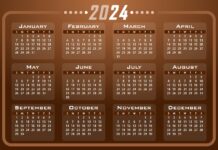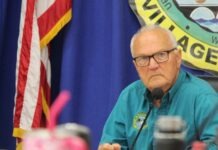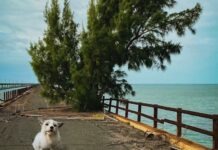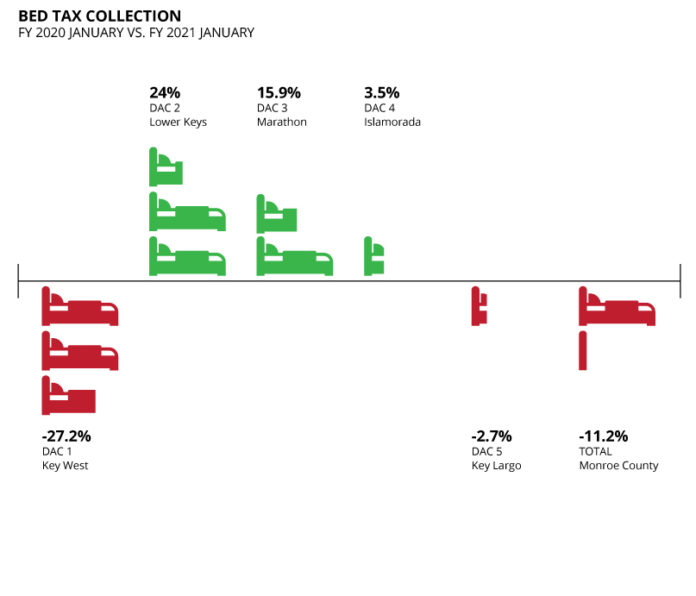One of the best measures of tourism and the Keys’ economy is our so-called “bed tax.” The most recent report reveals an astonishing snapshot of how different areas of the Keys are faring.
In January, the most recent report available, Key West’s bed tax collection is way down, while the Lower Keys and Marathon are way up, especially the Lower Keys. Key Largo and Islamorada, meanwhile, are holding steady. That’s a complete turnaround from what normally happens. Key West’s district, DAC I, usually rakes in the most money, followed in descending order by Marathon DAC III, Key Largo DAC V, Lower Keys DAC II and Islamorada DAC IV.
“We’re up almost 16% in DAC III, Marathon, in January compared to last year,” said Marathon Chamber of Commerce CEO Dan Samess. “It’s important to note that these numbers for 2020 are for the months before the pandemic really hit us in March, but especially April,” said Samess. “It was already shaping up to be a great year.”
But the real rock star of the pandemic is the Lower Keys DAC II region that measures from the west end of 7 Mile Bridge to Cow Key Channel just outside of Key West. The number of visitors staying in hotels, campgrounds or vacation rentals in January 2021 was up 24% over the number staying in hotels in January 2020. In October, it was 51% higher.
It’s possible that the surge in reservations in the Lower Keys district specifically is tied to visitor preferences during the pandemic — the wish to stay out of the more populated areas of the Keys and easier access to the water for kayaking and boating. It also presented options for groups who wanted to travel, but also stay in their own bubble whether at boutique hotels on Stock Island, campgrounds or the RV park on Sunshine Key.
In the Lower Keys, the bed tax collection for January was higher than in any year since 2014, including the general bump the Florida Keys received in 2019 when the Keys were largely rebuilt after Hurricane Irma in 2017. For the month of January, the Lower Keys collected $289,779 in 2019, $319,502 in 2020 and $388,988 in 2021.
The Middle Keys saw similar growth of bed taxes in January — $572,702 in 2019, $676,684 in 2020 and $768,002 in 2020. December was an even better month in the Middle Keys; the district was up more than $100,000 in bed tax collections when comparing December 2020 to December 2019.
Key West is still king, though, when it comes to bed tax raw numbers. Even when the reservations are down by 27.2%, the district still collected $1.7 million in January 2021 — more than one-third of all the collections up and down the Keys that month. In 2019, the last complete fiscal year before the pandemic, the Keys as a whole collected $39.8 million. In 2020, that was down by about $8 million. Right now, the Keys look good to exceed the 2019 numbers.
The bed taxes are allocated to advertising the Keys as a tourism destination, promoting events and building “brick and mortar” tourism attractions.
The Keys are not alone in increasing revenue collections. According to the Florida Legislature’s Office and Demographic Research, the state’s general revenue collections came in almost $300 million above the forecast for February. According to a report, that was the seventh consecutive month that revenues beat the revised (and reduced) forecast published in August, compiled during the economic uncertainty of the pandemic shutdown.






















